Browse using the new Vinous website now. Launch →
Printed by, and for the sole use of . All rights reserved © 2015 Vinous Media
Barbaresco: The Stellar 2021s & Surprising 2022s
BY ANTONIO GALLONI | OCTOBER 29, 2024
The 2021 and 2022 vintages show two very different sides of Barbaresco. Now that most of the wines have been released, the early promise of 2021 is no longer a question of potential but of reality. These are vivid, exceptionally beautiful wines that show the heights Nebbiolo can reach. Conditions were much more challenging in 2022, and yet the first wines I have tasted suggest there may be some surprises in store. We will see.
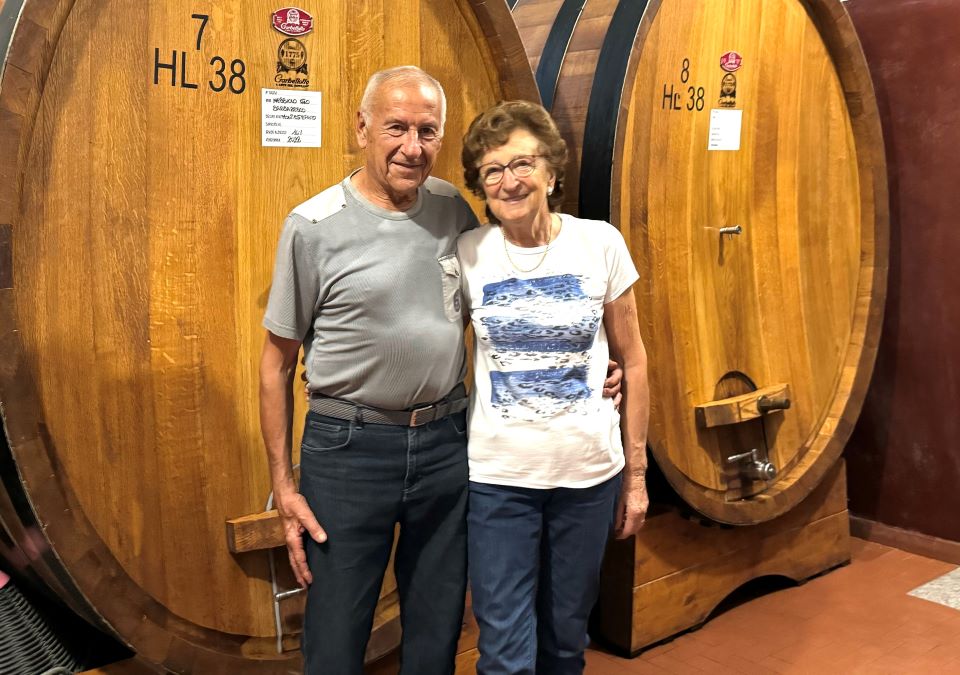
Teobaldo and Maria Rivella turn out gorgeous, classically built
wines in their small cellar in Barbaresco’s Montestefano district.
The 2021 Growing Season & Wines
Two thousand twenty-one was marked by a cold and rainy winter. Spring was quite cool, leading to a delayed bud break. There was a bit of frost damage on April 8. The early part of summer remained cool, with some rain in mid-July that was well-timed. Hail on July 31 affected some areas. Heat picked up in earnest around August 11. Until this point, the vintage had been tracking late, but then heat through September brought the ripening window back to a super-classic mid-October time frame. Rain episodes around harvest do not appear to have been problematic. Relative to 2020, 2021 saw higher highs and lower lows, with a longer growing season vis-à-vis 2020 and strong diurnal shifts during the final phase of ripening that are one of the signatures of this great Barbaresco vintage.
Many producers turned out superb 2021s. The wines are aromatic, deep and structured. In other words, classic Barbaresco. Next to the 2020s, the 2021s are more austere, tightly wound and in need of time. In some cases, though, that youthful austerity might remain. There are some estates where the 2020s appear to have the upper hand over the 2021s. Top producers turned out compelling wines in both vintages that will be fascinating to compare for years to come. I would be hard-pressed to cite consecutive vintages of such high quality.
It is no secret that the wine market is seeing a period of softness, which makes this a great time for savvy consumers looking to build their cellars for the future. Barbaresco remains a superb value in the world of artisan wines of place.
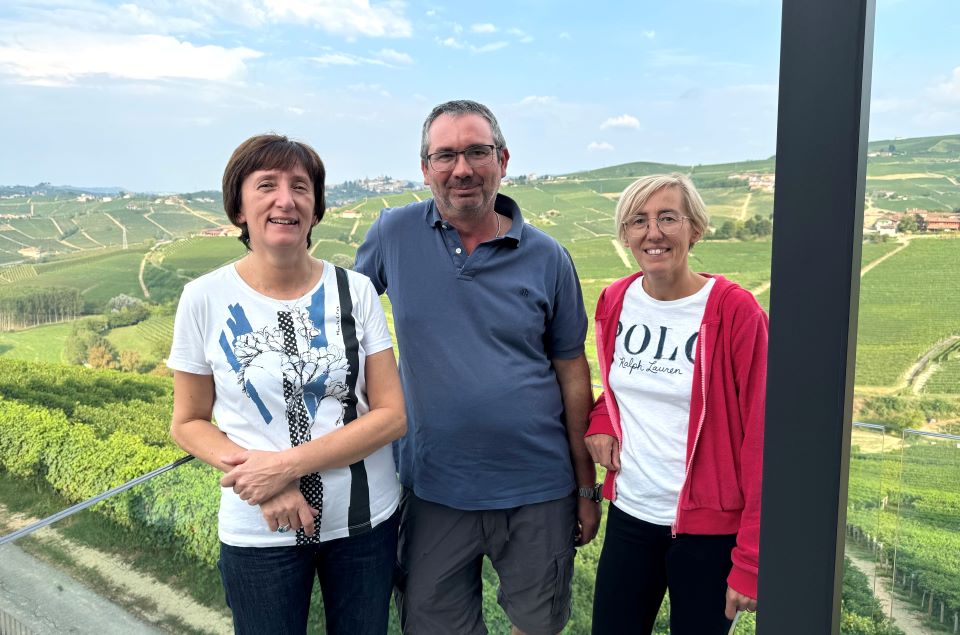
The team at Albino Rocca, led by Monica
Rocca, Carlo Castellengo and Daniela Rocca, made some
of their finest Barbarescos ever in 2021.
What Makes a Great Barbaresco Vintage: An In-Depth Look at 2021
Over the last few years, I have shared a template for a model of what I think makes a great vintage in Barolo and Barbaresco. It is, of course, the sum of everything I have learned from many people, organized in a way that I think makes sense. Unlike Bordeaux, Piedmont does not have an established framework for what constitutes a high-quality, important vintage. Clearly, many people have views, but I have never seen them codified. What follows is my set of objective criteria necessary for a Barolo or Barbaresco vintage to be considered truly great. This framework is inspired by the late Denis Dubourdieu and the model he developed for assessing Bordeaux vintages. To that, I add my 20-plus years of visiting Piedmont and all the data I have collected in speaking with winemakers, agronomists and other professionals over that time, plus drinking more than my fair share of the wines. As with Dubourdieu’s model, this addresses the growing season and does not venture into an assessment of the actual wines.
Indeed, this model was created in the present day. It won’t apply as well to vintages from previous eras, especially vintages from the 1950s-1970s. At that time, warm weather was considered quite favorable because grapes struggled to ripen. The warmest vineyards, those that faced due south, the famous sorís, were the most coveted. Today, in our climate-change-challenged world, you would be hard-pressed to find a producer who believes that south-facing vineyards are the most ideal. Last but certainly not least, with its varying elevations, myriad exposures and different soil types, Piedmont is inherently complex. In short, Piedmont is not a region that is intrinsically well-suited to generalizations. Even so, some information is better than none.
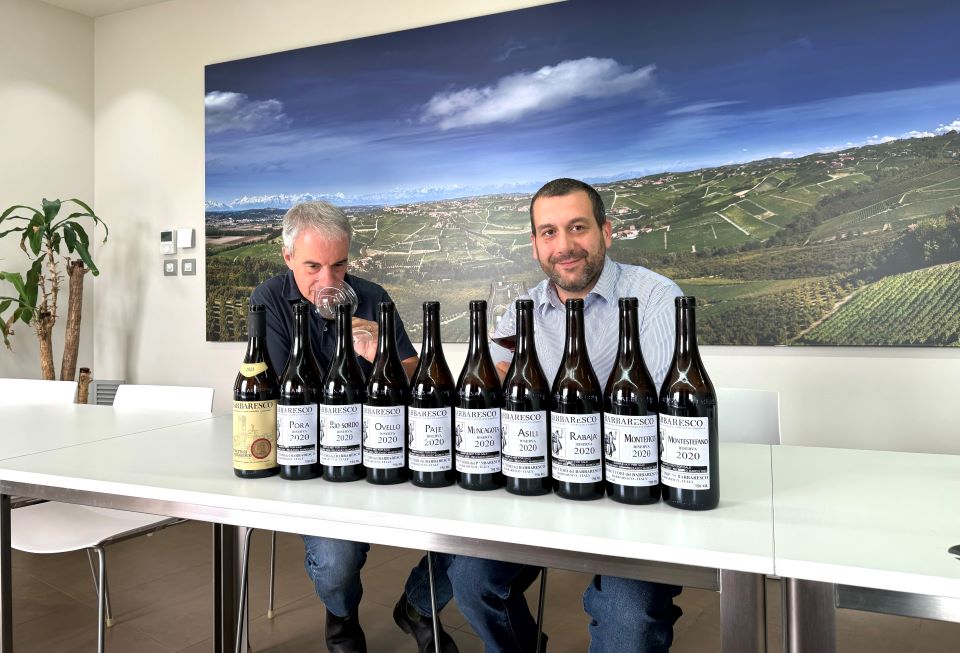
Tasting the full range of wines with Aldo Vacca and Luca
Cravanzola at Produttori del Barbaresco.
1. A Long Growing Season – A long growing season, defined as the period from bud break to harvest, is essential for achieving full physiological ripening of the fruit, skins and seeds. Since Nebbiolo is already a very tannic grape, less than full physiological ripeness is heavily penalizing. The 2021 growing season was fairly regular and mostly within the parameters that are required for the full ripening of fruit. Harvest took place in early October, perhaps a bit earlier than ideal, but not meaningfully. Therefore, the first condition is mostly met.
2. Diurnal Shifts – The final phase of ripening must be accompanied by diurnal shifts, in other words, swings in temperature from warm days to cool nights. Diurnal shifts create aromatic complexity, full tannin and flavor development and color. Evening temperatures cooled down markedly in the weeks leading into harvest, resulting in wines with deep color, aromatic presence and fully ripe tannins. Thus, the second condition is met.
3. The Absence of Shock Weather Events – Frost and hail can severely and irreparably damage the crop. Similarly, periods of uninterrupted elevated heat can block maturation. In 2021, conditions were consistently warm and dry, with well-timed rains. Frost and hail events, almost always present in Piedmont to some extent, were limited. There were no heat spikes or other widespread shock events. The third condition is mostly met.
4. Stable Weather During the Last Month – The last month of the growing season makes the quality of the vintage. Weather during this critical period was stable. There was some rain during harvest, but not enough to have created widespread problems. Thus, the fourth condition is met.
5. A Late Harvest – Harvest must take place in October (possibly late September in some areas), with the final phase of ripening occurring during the shorter days of late September and October, as opposed to the longer, hotter days of August. Most producers picked in October late by present-day standards. As always, there is a level of variation, with some producers starting harvest in late September and others picking into late October. The fifth condition is met.
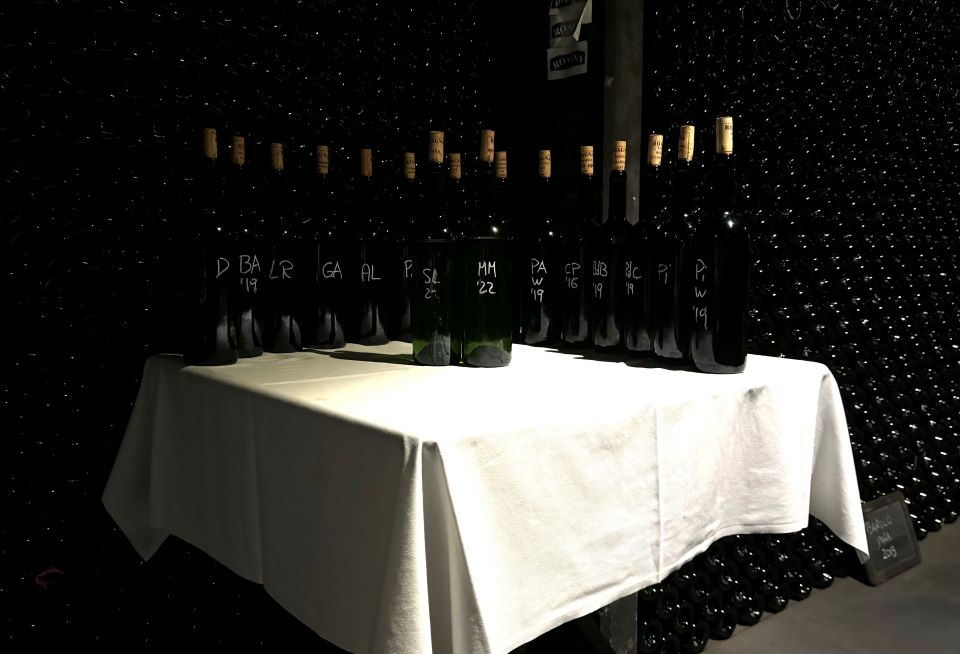
Tasting the full range at Roagna is a fascinating journey through
a collection of top sites in Barbaresco and Barolo.
In conclusion, all the conditions required for a good to great vintage were met. Not surprisingly, the average quality of the wines is exceptionally high.
The 2022 Barbaresco: First Impressions
So far, I am impressed with the 2022s, given what looked like dire conditions during most of the year. Unrelentingly hot, dry weather pushed vines to their maximum. I find the 2022s texturally light as if ripening just stopped at some point. At the same time, the tannins are pretty soft and much less forbidding than I had expected, given the weather. Unripe tannins are always the fear with very hot years in Piedmont. Perhaps growers have become more accustomed to extreme heat and drought. Yield management was another issue growers had to confront. "The key in 2022 was dropping fruit. Otherwise, the vines would not have been able to ripen their crop," Teobaldo Rivella explained. It will be interesting to see how things eventually turn out when the entire vintage is released.
One thing that is certain is that approaches to farming are constantly developing in a world threatened by climate change, which in Piedmont is manifested through much stronger sun and less water. “While it is warmer today, it is really the end of the growing season that has changed the most,” Aldo Vacca shared at Produttori del Barbaresco. “We deleaf less aggressively than in the past,” Andrea Sottimano told me. “But we deleaf earlier in order to help the grapes get used to the sun earlier in the year. There is no question the sun is much stronger today than it once was.”
Many 2022s saw less time in oak and were bottled on the early side. I don’t think we will see too many Riservas or high-end bottlings. Overall, 2022 looks like a vintage for near to medium-term drinking.
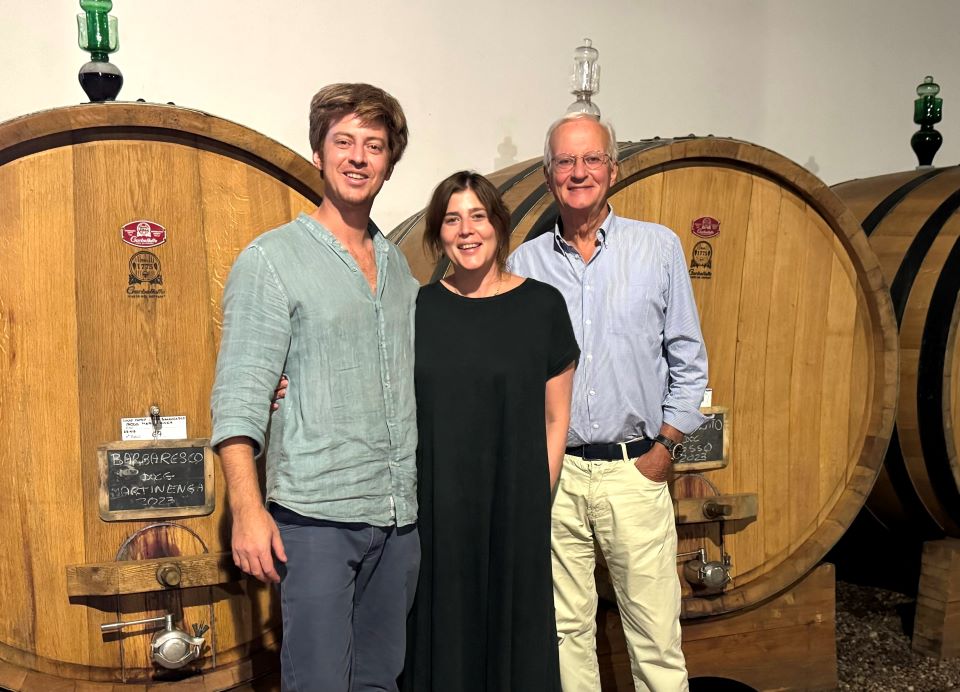
Alessandro, Ludovica and Alberto di Grésy make wines of grace and
understatement at their estate nestled between Martinenga, Asili and Rabajà.
About this Report
I tasted all the wines in this report during a visit to Barbaresco in September 2024, along with a few follow-up tastings in our New York offices. Because of the structured style of the 2021s, I tasted many wines more than once. This report includes entry-level wines from a number of properties, something I have started to do to provide a complete look at top estates rather than culling out entry-level wines for a separate article. Dolcetto, Barbera, Langhe Nebbiolo and other wines are obviously not perfect substitutes for Barbaresco, but the best wines offer superb value and character to match. Many of these wines are from the 2023 vintage, a hot, dry year, but one that saw just enough rain to offer better overall balance than 2022, even if some early-ripening varieties were impacted by rain before harvest. Readers will find much more specific context within the accompanying reviews and producer commentaries.
I tasted all the wines in this report during a trip to the region in September 2024.
© 2024, Vinous. No portion of this article may be copied, shared or re-distributed without prior consent from Vinous. Doing so is not only a violation of our copyright, but also threatens the survival of independent wine criticism.
You Might Also Enjoy
Barbaresco’s Soaring 2020s & 2021s, Antonio Galloni, October 2023
Piedmont Within Reach, Antonio Galloni, December 2022
Focus on Barbaresco – A Close Look at 2019 & 2020, Antonio Galloni, October 2022
2018 & 2019 Barbaresco Take Center Stage, Antonio Galloni, February 2022
Show all the wines (sorted by score)
- Adriano Marco e Vittorio
- Albino Rocca
- Barale Fratelli
- Bruno Rocca
- Ca' del Baio
- Cantina del Pino
- Ca' Rome'
- Cascina Baricchi
- Cascina delle Rose
- Cascina Morassino
- Cascina Vano
- Castello di Neive
- Castello di Verduno
- Cecilia Monte
- Cocito
- Fiorenzo Nada
- Fletcher Wines
- F.lli Cigliuti
- F.lli Giacosa
- Francesco Versio
- Gaja
- Giorgio Pelissero
- Giuseppe Cortese
- Guido Rivella
- La Ca' Nova
- La Ganghija
- La Spinetta
- La Spinona
- Lodali
- Marchesi di Grésy
- Michele Chiarlo
- Moccagatta
- Paitin
- Piero Busso
- Pier Paolo Grasso
- Poderi Colla
- Produttori del Barbaresco
- Prunotto
- Roagna
- Serafino Rivella
- Socré
- Sottimano
